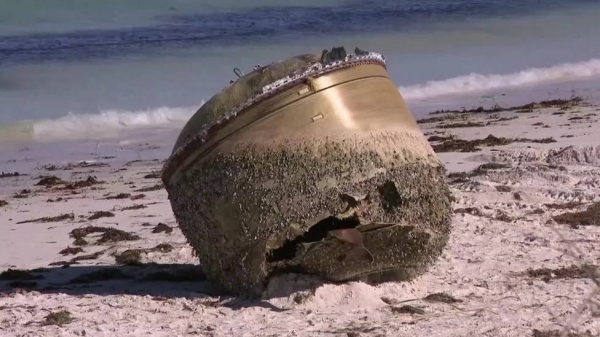
Four species of bacteria – three of them previously unknown to science – have been discovered onboard the International Space Station (ISS), begging questions about how they got there, and how they have managed to survive.
Their discovery may also bolster future efforts to cultivate crops during long spaceflight missions, since related species are known to promote the growth of plants and help them fight off pathogens.
Previous studies had suggested that certain resilient strains of bacteria could survive the harsh conditions of space, including dried pellets of Deinococcus bacteria – listed in the Guinness World Records as the world’s toughest – which survived on the space station’s surface for three years. They were deliberately placed there to test the “panspermia” theory, that life exists throughout the universe and may be transported between planets by space dust, asteroids, comets, or even contaminated spacecraft.
Another recent study identified a diverse population of bacteria and fungi associated with the human body inside the ISS, where they are somewhat more protected – though still subject to low gravity, recirculated air and high levels of carbon dioxide.
The new bacteria were similarly identified from swabs of various locations inside the ISS. One was discovered on a dining table; another on an overhead panel in a research area used to study low gravity; the third in the Cupola observatory. The fourth species, which was already known of, was found on an old air-purifying filter, which had been returned to Earth. All of them are rod-shaped bacteria belonging to the Methylobacteriaceae family – usually found in soil and fresh water, where they help to promote plant growth and defend against pathogens.
They’re most likely to have been transferred to the ISS from Earth – rather than coming from outer space – and have either survived since the station’s inception, or were introduced when new astronauts or payloads arrived.
Christine Moissl-Eichinger, a microbiologist at the Medical University of Graz, Austria, said: “All microbes in the ISS stem from Earth. There are astronauts, and cargo is exchanged all the time. None of these items are completely sterile.”
It is important to understand the types of microbes that can accumulate, survive, and even thrive in this unique environment, because they may affect the health of crew, the spacecraft’s structure, or contaminate the planets and astronomical bodies they visit.
“Since these ISS strains were isolated at different time periods and from various locations, their persistence in the ISS environment and ecological significance in the closed systems warrant further study,” wrote the Indian-American team who carried out the analysis, which was published in Frontiers in Microbiology.
Methylorubrum rhodesianum was the bacterium found that was already known to science. The other three had never previously been identified, but genetic and taxonomic analysis suggests they are related to Methylobacterium indicum, a bacterium sometimes found on rice grains. The researchers said the bacteria may provide “biotechnologically useful genetic determinants” for the growing of crops in space. “To grow plants in extreme places where resources are minimal, isolation of novel microbes that help to promote plant growth under stressful conditions is essential.”
However, Moissl-Eichinger cautioned against getting too excited about the discovery. The fact that these microbes have never previously been described by science doesn’t necessarily mean they are important. She said: “In every spoon of soil, or stool sample, there are hundreds of undescribed microbial species. I am sure there are still hundreds or even thousands of less characterised, maybe even unknown, microorganisms aboard the ISS.
“This [finding] is of course kind of interesting, as we are aiming to send humans on a long trip to Mars some day, and they will be enclosed together with billions of microbes. The more we know about all those different species, the better.”











